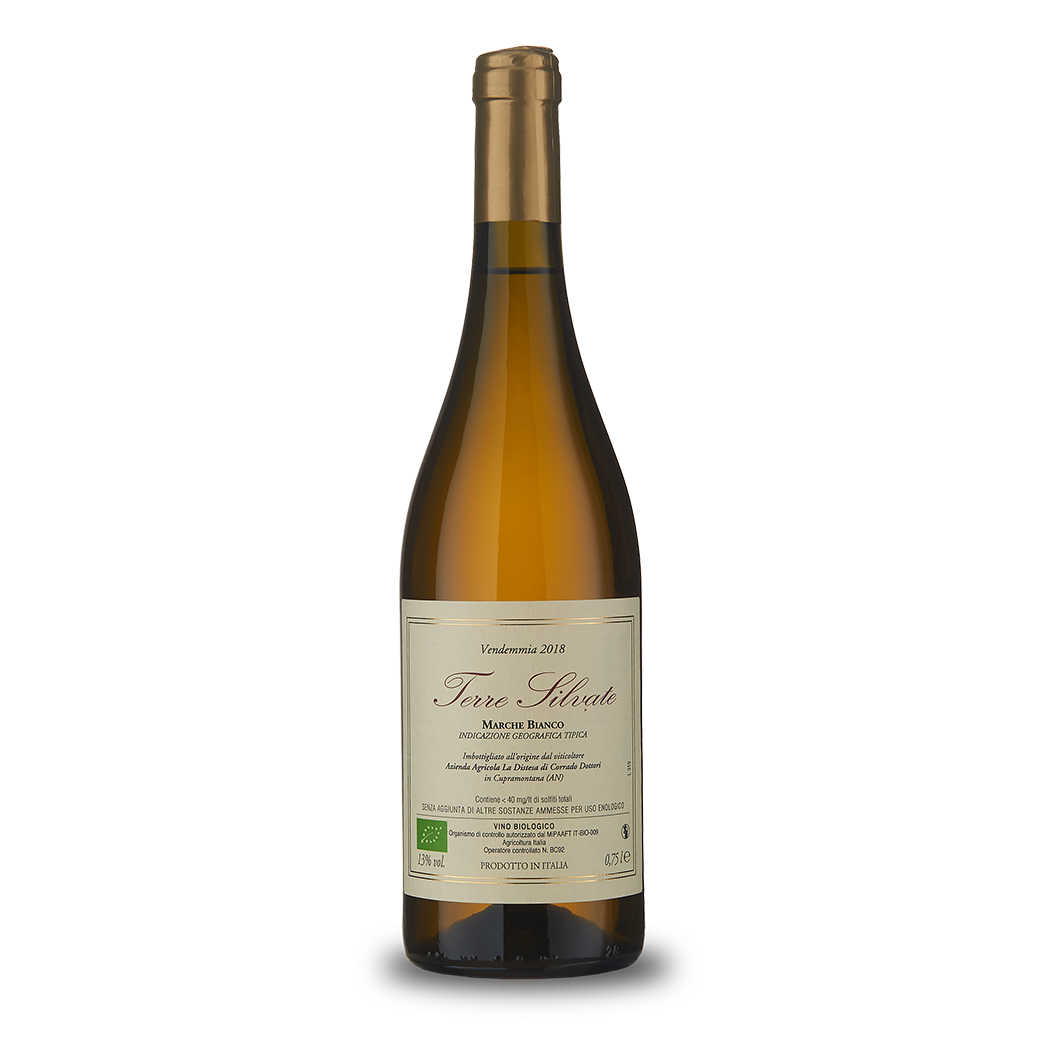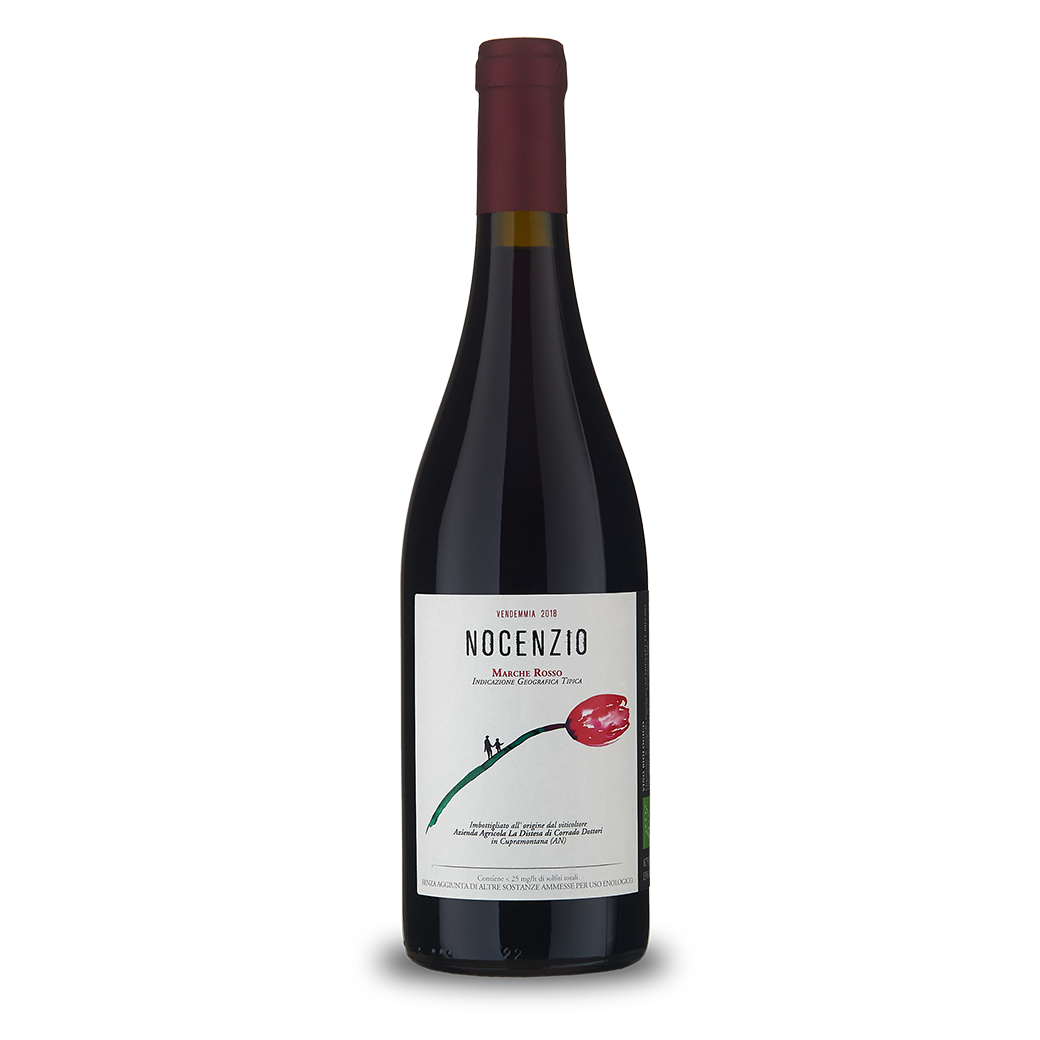La Distesa
Guardians
La Distesa is a rural community located in the Marche hinterland and extends over two farms in the municipality of Cupramontana, in the province of Ancona. The main activity is the cultivation of vines for the production of high quality natural wines, but the farm also consists of olive trees, arable land, fodder, wood. Organic farming is practiced throughout the company, certified by CCPB.
They consider themselves guardians of that natural environment that is the agricultural landscape of the Marche region: a living organism generated by the continuous and centuries-old work of man.
They are “La Distesa”
For them, being winemakers means first of all telling about the territory, with its thousand complexities, and following the seasons, with their always different evolutions. This is why they have chosen an organic cultivation method, so as to express without distortion what the earth naturally brings with it.
And then it means directly following the entire production process, from the earth to the consumer.
A living ecosystem
For years they have been working in the vineyards trying to safeguard and allow biodiversity to be expressed to the maximum, sowing field beans, vetch, pea, alfalfa between the rows and letting the spontaneous essences flourish.
They respect the physiology of the vine: They do not top, they prune respecting the natural propensity to branch, they do not defoliate, they do not work the sub-row except by squashing with the feet or manually cutting the excess weeds. They do not fertilize, they only treat with sulfur and small doses of copper. They use nettle and horsetail herbal teas; in autumn and spring we spray the biodynamic preparations 500 (cornoletame) and Fladen (Maria Thun) of the Le Madri Foundation.
In their farms there is never monoculture: woods, hedges, trees, reeds, weeds alternate with arable land (where the right rotations and light processing maintain fertility), with olive groves (which are not treated), with vineyards.
They conceive agriculture as a living ecosystem, in balance between the energy of the wild and the strength of the human.
Their vineyards
They currently manage 8.5 hectares of vineyards, mostly between 25 and 45 years of age. All the vineyards fall within the administrative boundaries of the Municipality of Cupramontana or just outside (in the Municipality of San Paolo di Jesi), a maximum of four km as the crow flies from the cellar in contrada San Michele.
The cuprense terroir has always been considered perfect for the production of structured and long-lived wines, with great flavor and aromatic complexity. The vineyards extend all around the village, perched on top of the highest hill in the area, at 505 meters. The variability of the exposures and the slopes, combined with the alternation of different soils, has led over the years many local winemakers to often vinify by crus (there called "contrade"). Here it is enough to recall how the Cuprense territory is part of the Umbrian-Marche Apennines, essentially consisting of a series of sedimentary rock formations of marine origin. Starting from the Miocene, about 23 million years ago, this sedimentary series was compressed by tectonic forces, faulted, folded and raised to form the mountainous and hilly ridges of their Apennines, which thus emerged from this ancient proto-Mediterranean ocean that the geologists call it Tethys.
The hills of the Cupramontana terroir were formed during the final part of this process of tectonic uplift and structural deformation, in a period that is roughly that of the lower Pliocene, ie about 4-5 million years ago.
Contrada San Michele
Often considered as the "grand cru" of Verdicchio, San Michele represents the quintessence of Cupramontana wine.
The winemaking tradition almost certainly dates back to the work of the Camaldolese monks who near the current church of San Michele had a hermitage founded by San Romualdo in the first decade of the year 1000. Throughout the territory of the Castelli di Jesi the monks plowed the woods (Terre Silvate) to create vineyards and arable land.
This has always been considered a natural cru in Cupramontana. It is found in historical documents and oral narratives. "Alone" area, free from stagnant humidity, with excellent ventilation and a good height above sea level to ensure significant excursions between day and night temperatures.
It is harvested earlier than elsewhere, in the San Michele district. And the wines taste of aromatic herbs and orange peel.
The soils are poor and calcareous with a predominance of clays, marls and gypsum. Less is the presence of sandstone, mainly concentrated in the upper part of the ridge.
The wines of this area express power, structure and flavor, peculiarities of this side. In the warmer years they show muscles and fullness of taste while in colder years they are able to surprise with iodized and marine hints.
Guardians
La Distesa is a rural community located in the Marche hinterland and extends over two farms in the municipality of Cupramontana, in the province of Ancona. Th...
Filters
Filters


